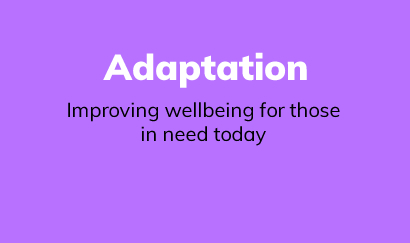Our Approach to Aging Science
Aging is an inevitable, universal process for both individuals and populations. There has been a revolution in health and mortality, with life expectancy around the world having sharply increased over the past century. It is also one of the greatest achievements of humanity.
However, aging is often represented as an existential threat to society, economies, political and health systems. It is presented as a fragmented science characterized by unclear policy statements, inadequate measures and a lack of a coherent, multi-dimensional narrative able to capture global attention and inspire imagination for solutions.
We propose that the study of aging can learn from climate change in terms of presenting a multi-dimensional, holistic research, policy and measurement framework. This can (1) convey a globally consistent strategy but can also be tailored for regional priorities; (2) represent a balance between the political and practical benefits of a ‘life-course-segmented approach’ and a more scientifically valid ‘pure life-cycle’ approach; (3) allow for multiple sectors and institutions to be explored and (4) present a simpler, cleaner presentation of the challenges and policy responses to aging. This framework is outlined at a conceptual level below.



In our conceptualization, adaptation can be thought of as improving the well-being of those ‘in need’. To be clear, this is not about saying that all people over the age of 60 are ‘in need’. Quite the opposite. Drawing on the notion of a ‘characteristics approach to aging'[1], this ‘need’ is not determined by chronological age (e.g. over 65, or even over 85) but by ‘actual’ need such as income and poverty, health, infrastructure, housing and so on. This means that something needs to be done, urgently, to improve their immediate well-being through policy making, technology, as well as life science. This notion of ‘in need’ will, inevitably, be judged on a national (or sub-national) level according to local priorities, cultural particularities and the relevant capacity of stakeholders. Despite this, the core SDG (Sustainable Development Goals) principles of ‘No one left behind’ - on the most vulnerable - can still be applied as a core, global principle[2]. When we apply a pure life-course approach, we would say that ‘in need’ is completely ‘age blind’.
Mitigation is about ensuring those who are already aging, age better. We cannot hold back time - people’s ‘chronological age’ will inevitably increase. But when we take a more holistic ‘characteristics approach’ to aging'[1], we can ‘change the curve’ in terms of well-being and, hence potentially lessen burdens of dependency. As technology and engineering become more sophisticated, innovations and medication offer the potential to improve the current condition of people who have already had many aspects of their life-course in train, as well as help shield them from developing conditions in the future.
Resilience is about recognizing the long-term implications of investing early in life to shift the paradigm on aging all together, including health and child development to ensure the younger generations age well can have a chance to live their potential to the fullest. From the public policy perspective, putting the focus of these early investment on the foundational education and skills which will be brought into working career is essential. As for science and technology, the advances cover various fields in serving for healthy aging, for instance, identifying individuals with higher risk of complex aging-related disease and developing proprietary anti-aging health products could allow people to live healthier over the life course.
Aging Science at HKUST
At HKUST, research in these cross-cutting strands is performed across three interlinked ‘pillars’.
The technology pillar broadly explores engineering responses to aging. The body pillar broadly explores the role which life sciences can contribute to aging science. The society pillar explores both the social, economic and policy dimensions of aging and how these technological and life sciences innovations can be applied. Finally, by grounding the initiative in a robust data framework, we will be able to monitor and evaluate the impact of our basic research and our interventions in the lab and in the community.
Our researchers are working across both pillars and strands. In the various project pages on this site, you will find a matrix showing how their research cuts across these strands and pillars.
[1] Warren C. Sanderson, Sergei Scherbov, The Characteristics Approach to the Measurement of Population Aging, 2013
[2] United Nations The Sustainable Development Goals Report 2018
